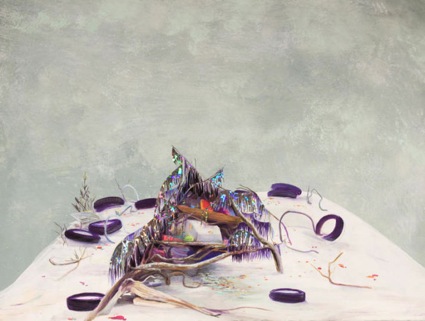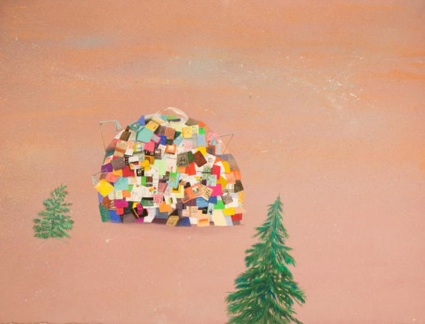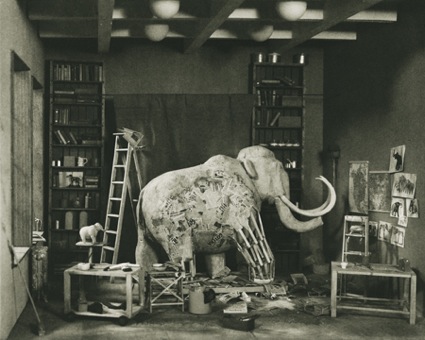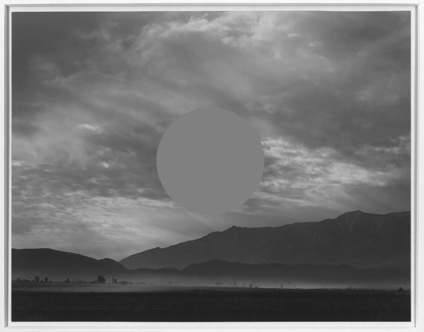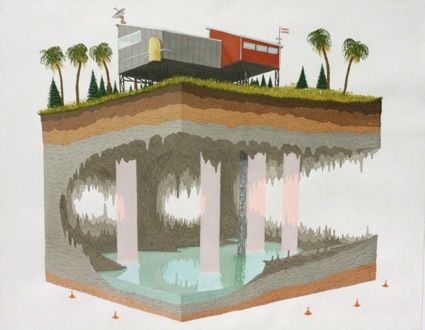It seems like today we’re going through a similar technological revolution to the one we went through over 100 years ago and like a 100 years ago this jolt to our reality is showing up in the visual arts. This moment in time comes from craving a connection to nature or what is real and basic because every experience in our lives seems mediated by screens: computers, iphones, flat screens, etc. This has me thinking more about Part 1 of this post and my response to the work of artists like Morgan Jones at Sofa, the other artists I’d written about and their similarities in subject matter.
At the end of the 19th C. and the beginning of the 20th C. technology had not only evolved to change the very nature of commerce and nation states but it had also changed who we were and the basic relationships that we had to the greater world. Today, in an age that has transformed from the industrial to the postindustrial information economy we have moved form analog to digital and are going through a similar kind of nostalgia for primal relationships between human beings and nature. Our “green” world is one that uses technologies such as solar panels to get closer to a pre-technological age. Today is a world of Michael Pollan, farm to table, and whole foods stores. Artists here in Austin and elsewhere are going through a similar kind of nostalgia for nature like German Romantics such as Kasper David Friedrich or French Romantics like Rouseau or painters that made plein air works such as Courbet and the Impressionists that followed him.
At Women & Their Work Virginia Yount’s Unsustainable Attainment is a mix of painting, collage and sculpture that address the environment and society’s dependence on industry and production. Using plastic, bottle caps and garbage for imagery as well as material she makes landscapes out of detritus. Delicate works on paper explore the relationships between nature and a society of absentee hoarders and shut ins. Devoid of people their presence is still felt in the accumulated piles of stuff left within and around the composed landscape. Dustbins of Literature (For my Bookshelf) and Electric Beach House (For Car Salesmen) are two of the strongest examples of this and also two of my favorites.
Much of the work in Interrupted Landscapes, which was the first exhibition at Champion Contemporary Gallery, also references a longing for by gone days. Many of the paintings, sculptures, and photos in this exhibition are made to look like or reference objects or images from decades or centuries past. Images that look overgrown or forgotten. Some works use the technology of the present to mediate this imagery. A longing that seems doubly mediated – a nostalgia for the nostalgia for the truth – as seen in the work of Lori Nix’s Mastodon with its exposed stand in for an exotic carcass or Adam Schreiber’s Lac du Flambeau which references past innovations and photographic advancements. Barry Stone’s Middle Grey which was smartly hung directly across from Schreiber’s Lac du Flambeau in the gallery intentionally and unintentionally references Schreibers work in the same way that all of the works in Interrupted Landscapes seem to reference Romantic and later Realists paintings. Some because of their execution and others, the more abstract or surreal, because of their content. Like Frederich Church and the Realists who were reacting against new technologies such as the locomotive or the light bulb and making social commentary through their artwork these contemporary artists are commenting on their own shifting worlds as well.
Finally the work of Joseph Phillips at D Berman Gallery that closed on October 9 is another example. In Above the Reservoir Phillips uses pencil, ink and gouache to create layers the same way geological rocks build substance. Rocks, mud, an underground reservoir support a small building in a "tropical" environment but this one has pine trees and looks like some kind of messed up time-share. His drawings are visual commentary on land use and its commodification.
Technology and progress are what advances us into the future, but it is only in that future that we truly understand what has been lost from the past.


